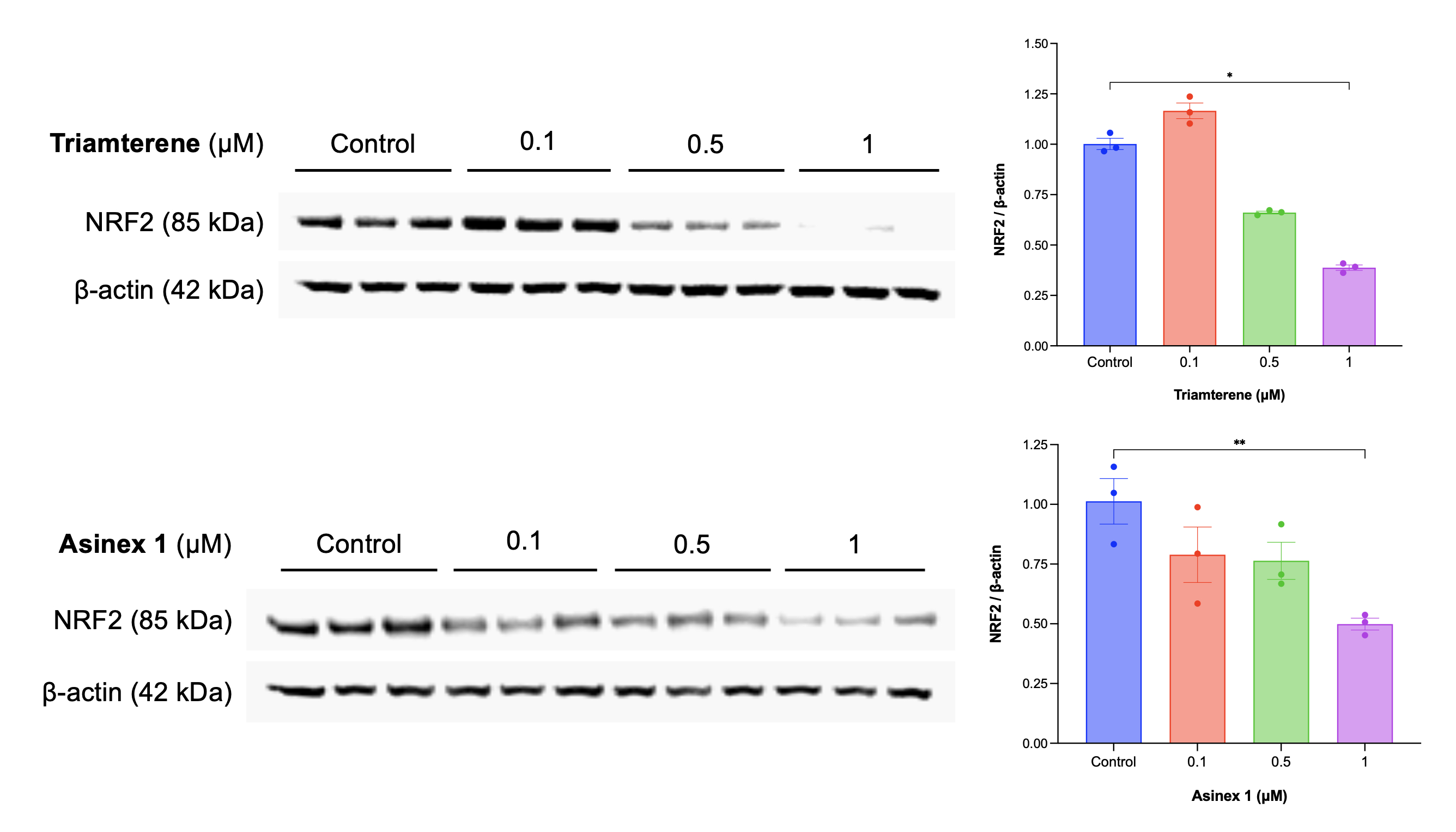Back to 2024 Abstracts
TRIAMTERENE AND ASINEX 1 INHIBIT NRF2 EXPRESSION IN NRF2MUT ESOPHAGEAL SQUAMOUS CELL CARCINOMA
Zachary Ladd
*1, Candice Bui-Linh
2, Chorlada Paiboonrungruang
2, Zhaohui Xiong
2, Francis Spitz
3, Tao Gao
3, Xiaoxin Chen
2,31Rowan University Cooper Medical School, Camden, NJ; 2Coriell Institute for Medical Research, Camden, NJ; 3Cooper University Health Care, Camden, NJ
Introduction: NRF2 is a transcription factor that regulates genes involved in oxidative and electrophilic stress response. Esophageal squamous cell carcinoma (ESCC) frequently harbors gain-of-function NRF2 mutations that cause NRF2 overexpression, drive chemo- and radio-resistance and lead to poor survival of patients with ESCC. Therefore, NRF2
Mut-ESCC demands targeted therapies against mutant NRF2. Previously, our lab performed high-throughput screening of two small molecule libraries that yielded 11 possible NRF2 inhibitors. Two of the compounds (pyrimethamine and mitoxantrone) have been validated as NRF2 inhibitors in human
NRF2Mut-ESCC cell lines and a genetically modified murine model (Redox Biology 2023; 67:102901). This investigation continues with the validation of the remaining candidates.
Methods: A pilot experiment tested the remaining 9 compounds for their NRF2 inhibitory effects on NRF2
W24C-KYSE70 cells. Dose- and time-dependent inhibition of NRF2
Mut by triamterene (an FDA-approved diuretic) and Asinex 1 (a novel compound) were further validated by Western blot in NRF2
W24C-KYSE70 and NRF2
D77V-KYSE180 cells. In addition, their mutant-specific activity was examined by testing
NRF2WT-KYSE450 and
KEAP1Null-KYSE450 cells.
Results: Triamterene and Asinex 1 potently inhibited NRF2 expression in
NRF2Mut-ESCC cells while the other 7 compounds failed. Both triamterene and Asinex 1 displayed dose- and time-dependent inhibitory effects on NRF2 expression with limited cytotoxicity. At 48 hours, triamterene at 1μM significantly reduced NRF2 levels by 61.2% (p=0.04), and Asinex 1 at 1μM significantly reduced NRF2 levels by 51.4% (p=0.004), in comparison to control (Figure 1). In
NRF2WT-KYSE450 and
KEAP1Null-KYSE450 cells, triamterene and Asinex 1 did not impact the expression levels of NRF2
WT, indicating selective inhibition of NRF2
Mut.
Conclusion: We have validated triamterene and Asinex 1 as NRF2 inhibitors in human
NRF2Mut-ESCC cell lines. Using established methods and models in the lab, we are testing these two inhibitors for their mechanisms of action and in vivo efficacy in a genetically modified mouse model.
 Figure 1
Figure 1: Dose-dependent inhibition of NRF2
Mut expression in NRF2
W24C-KYSE70 cells by triamterene and Asinex 1.
Back to 2024 Abstracts
